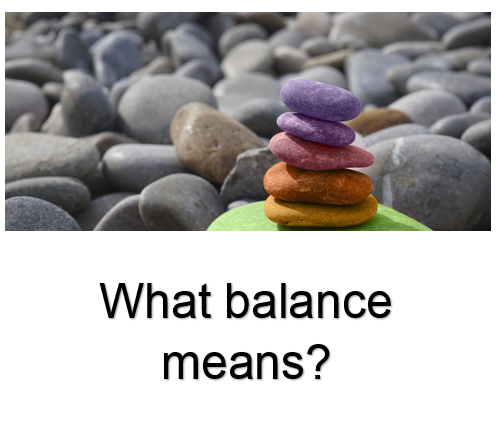
The mysterious word: balance, we often hear it in different contexts. Today I will try to explain how we can perceive the psychic balance. Nowadays, a lot is said about personal development, about leaving the comfort zone and overcoming one's own boundaries. To do these things on a daily basis, you should be in an optimal condition. I will try to tell you today about what this optimal condition is.
Among the homeostatic mechanisms, it is worth underlining three main categories that evoke emotions that have impulsive character.
Based on literature, created by @smashedturtle
These are phenomena related to restoration or violation of biological homeostasis, cognitive balance and psychological homeostasis. Biological homeostasis is associated mainly with mechanisms responsible for physical condition and existence. Lack of food evokes tension and pressure to get food. Similarly, there are secondary reactions, when it is not about food but about food preferences (hungry may not want to eat horseradish). Cannon in 1929 introduced the concept of psychological homeostasis. It is related to the determination of new premises of the body's balance by experience. From the biologist's point of view, it was about the fact that, gradually, as one is learning new needs are created that condition biological balance. However, with psychological homeostasis, we have broad ranges in other psychological phenomena. Gratification and deprivation also work on the basis of the "homeostate" principle needs of psychological genesis. We can follow Maslow and name their main categories: security, belonging and love and approval.

Maslow: Human's needs
(made by smashedturtle)
‘Mental well-being?’ you may ask – ‘What does it mean?’. Some people may say that Mental well-being is associated with stability and consciousness. I will not agree with that. There should be no stability at all. Like in Jean's Piaget theory: We build new balance everytime we experience something new. We are expanding our cognitive structures.
If we were to visualize it, then the cognitive structures would be like a growing tree. With each new experience, new branches appear and our perception of this tree changes in terms of quality. Although it contains old elements, after adding new ones, it becomes a qualitatively different tree. This understanding of balance makes stability (no change) what makes a tree cease to grow. This does not mean, however, that stability is not desirable at all. Imagine that we are the land from which a tree grows. We should be a fertile land that stabilizes and still provides good elements, allows the tree to grow. We can say that this land is our personality, which is constant in time, but its descriptive feature is a kind of flexibility related to adaptation to new conditions.
We can use "table case" to explain:
Based on literature, created by @smashedturtle
As you can see, the perception of elements that are not consistent with our schemes makes us unnerved. This is so that we have the opportunity to incorporate new phenomena into our patterns. Then we build a new balance that lasts until the next moment when we lose it (until new experience).
I hope that you see in the described process analogous to our everyday life during which we face new challenges. Being in a constant balance would mean not undertaking further challenges and staying at the same point. It should be remembered, however, that a healthy personality that allows you to face challenges is essential for optimal functioning. However, do not be sad about the moments in our lives that we perceive as a loss of our balance. Chaos is sometimes a sign of a new thing.
Literature
Piaget J. (1976) Piaget’s Theory. In: Inhelder B., Chipman H.H., Zwingmann C. (eds) Piaget and His School. Springer Study Edition. Springer, Berlin, Heidelberg
Maslow, A. H. (1971). The farther reaches of human nature. New York, NY, US: Arkana/Penguin Books.
Hartmann, H. (1958). Journal of the American Psychoanalytic Association monograph series: Vol. 1. Ego psychology and the problem of adaptation (D. Rapaport, Trans.). Madison, CT, US: International Universities Press, Inc.
Prochaska, J. O., Velicer, W. F., Rossi, J. S., Goldstein, M. G., Marcus, B. H., Rakowski, W., . . . Rossi, S. R. (1994). Stages of change and decisional balance for 12 problem behaviours. Health Psychology, 13(1), 48-59

SteemSTEM is a community driven project which seeks to promote well written/informative Science Technology Engineering and Mathematics postings on Steemit. More information can be found on the @steemstem blog. For discussions about science related topics or about the SteemSTEM project join us on steemSTEM chat.

SteemSTEM is a community driven project which seeks to promote well written/informative Science Technology Engineering and Mathematics postings on Steemit. More information can be found on the @steemstem blog. For discussions about science related topics or about the SteemSTEM project join us on steemSTEM chat.


VERY accessible introduction to Piaget, given how difficult his writings are ;)